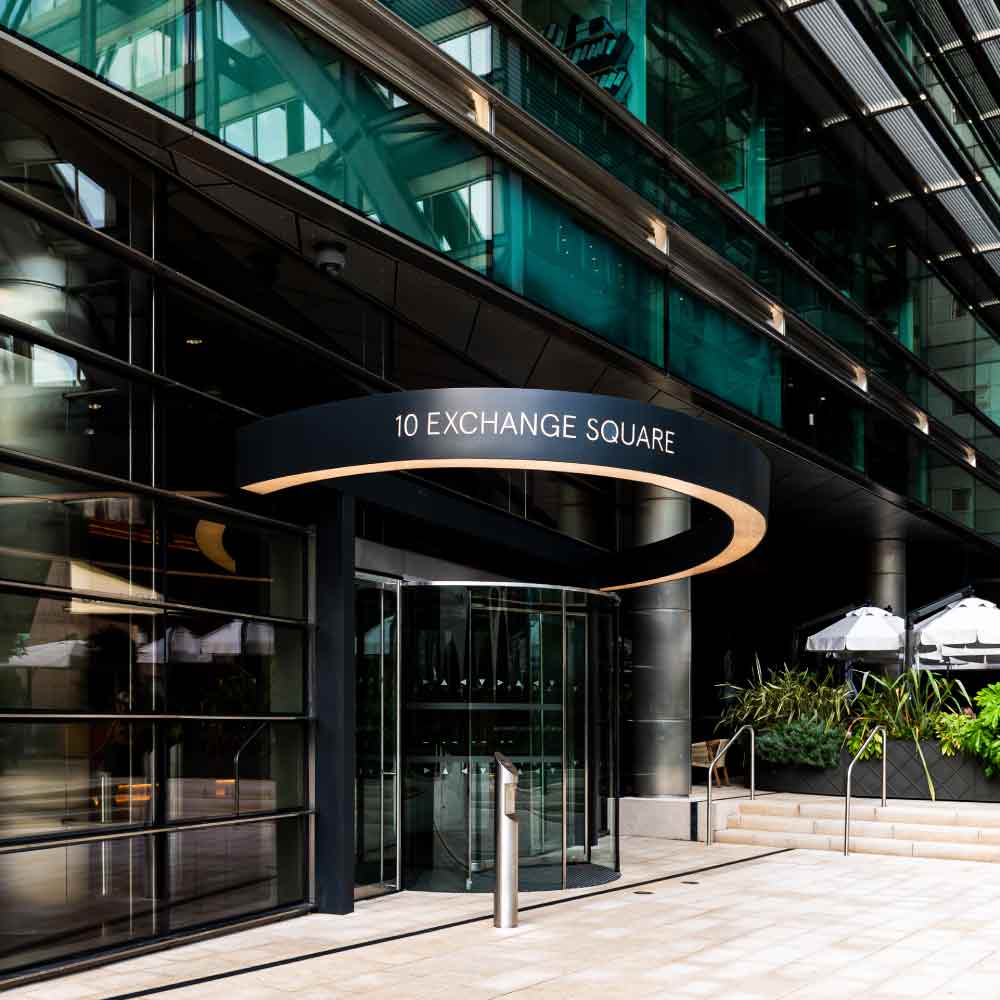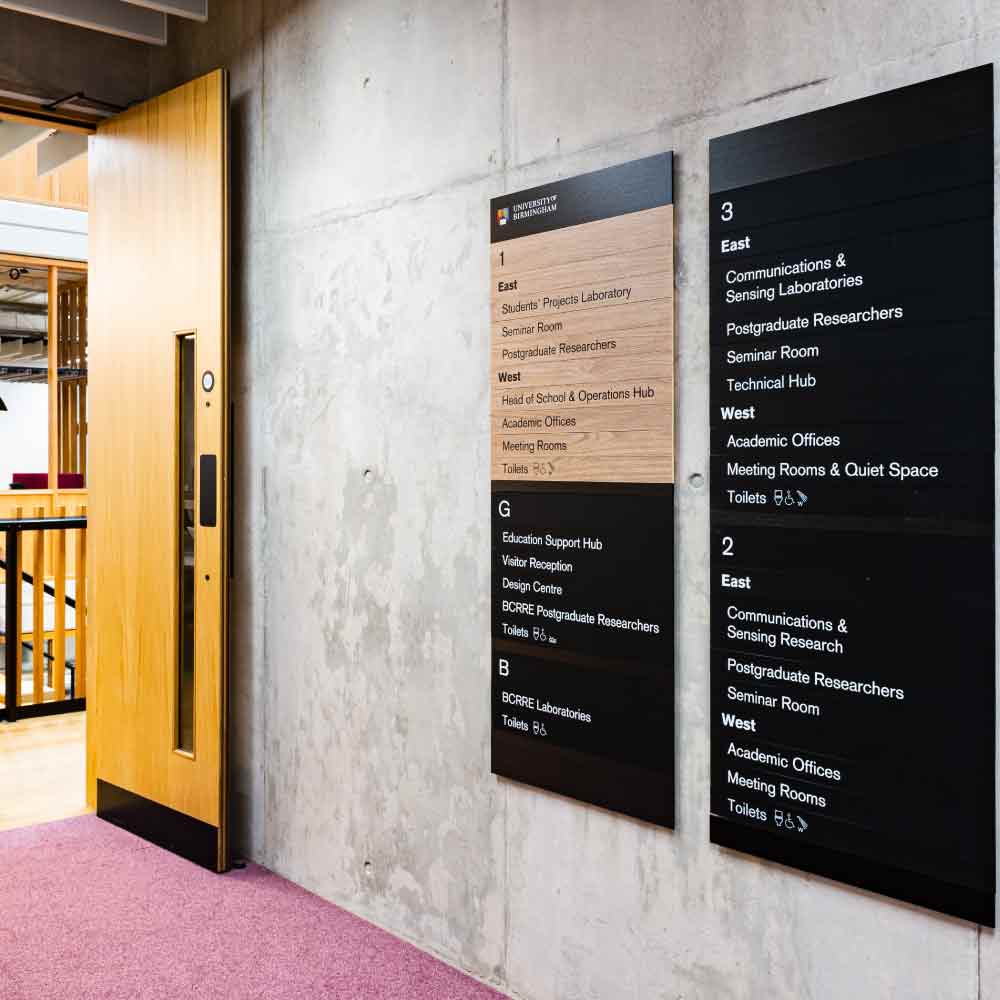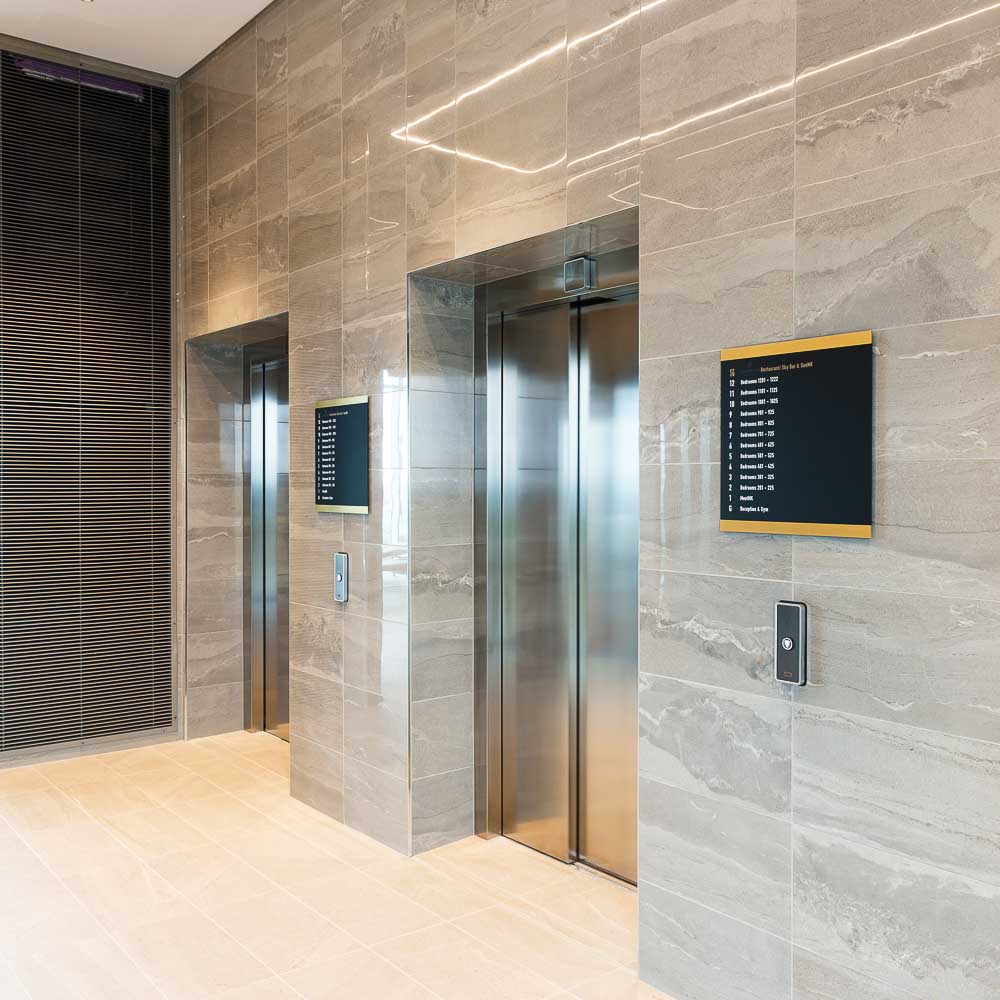The characteristics and benefits of architectural signage are different from other signs. Whereas some signs are purely for directions, are of average quality, or just temporary, architectural signs stand out as permanent, high-quality and bespoke designed art.
In this article we’ll break down the different components that make up architectural signage and look at an example for clarification.
What Makes Architectural Signage Different?
Signage has traditionally been the last part of a building process. More often than not, buildings are designed and built, then signs are added as an afterthought. Signs have often been added purely for wayfinding and sometimes don’t match each other in a cohesive design.
British architect Mark Shaw-Smith wanted to change this through architectural signage.
The ethos of architectural signage is to make signage part of the overall design. Building projects that have signage in mind from the start, and making use of signage as a design feature. When signage is incorporated into the fundamental concepts of the building, the result is stunning and functional.
What Is An Example Of Architectural Signage?
An example of architectural signage is the new Teaching and Learning Building at the University of Birmingham. Mark Shaw-Smith and the xsign team worked with the building architects and construction company to make more of the signage from the beginning.
Internally, the signage scheme includes elements of other parts of the campus. There are monolith totems for displaying floor level information, glass manifestation graphics and iconography around the facilities. It’s true, that the floor level signs could be basic wall hanging boards, but why would you have that, when you can make them both stand out and blend in as functional works of art?
Having that attitude led to environmental graphics being added to communal areas to make the learning spaces more visually appealing, welcoming and engaging. Projecting signage along walkways display information about key facilities.
Small details are a big deal in architectural signage. For example, the projecting signs are affixed to a wall with a bracket that matches the wall substrate in colour. This makes the design look sleek and sophisticated.
The monolith totem signs are not just functional but give off a statement and are eye-catching which is helpful for anyone looking for information. The Jigsaw modular system that Mark Shaw-Smith designed also allows for the panels on the totems to be changed when needed. This is a signature part of architectural signage; looking ahead to the future and planning longevity into the signage.


What Is Architectural Signage Made Of?
When working with signage as part of the architecture of a building, the materials are extremely important. As the signage is supposed to last a long time, alongside the life of the building, it is essential to use premium products and technical expertise in the design and production of the signage.
Incorporating materials such as stainless steel into signage designs means the signs won’t rust or corrode. Other, cheaper materials do not have the durability to match this and can make inferior signs. Stainless steel is not the only high-quality material that can be used for signage. Xsign has an extensive range of material finishes and choices for designers and architects to make signage work with the overall design scheme.
What Styles Can Architectural Signs Be?
There are many different styles and types that contribute to the uniqueness of architectural signage. Mark Shaw-Smith has developed a suite of patented, engineering products with the function of signage and exceptional features to improve the user experience.
These include a range of inclusive signs systems that include braille or deliver recorded messages to users with visual impairments. Other sign types include interior, exterior and graphics, all of which can be customised to match any building design schemes.
Architectural signage can be so diverse in its design and placement that you are likely to find examples all over the world. More than just a helpful sign, a bespoke architectural sign is a permanent artistic statement that adds aesthetic and functional value. If you are looking to incorporate architectural signage into your next project, get in touch with the team at xsign.


